
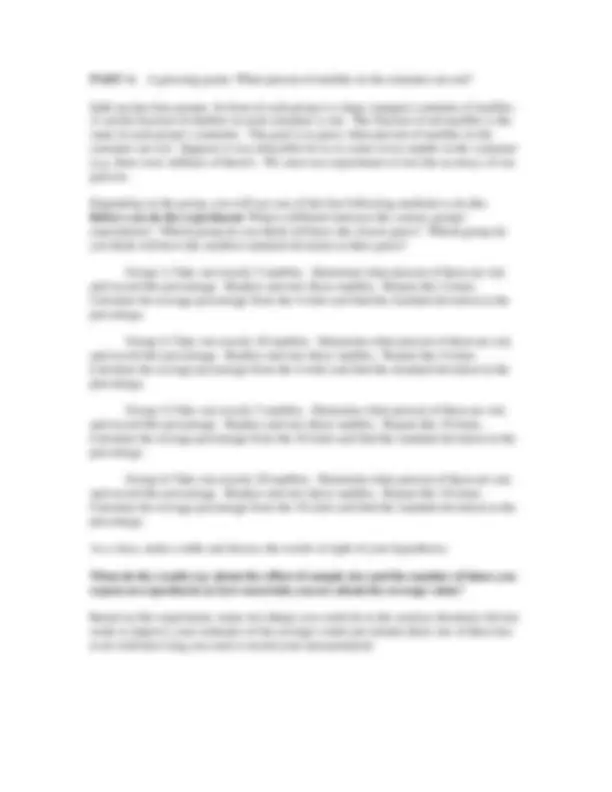
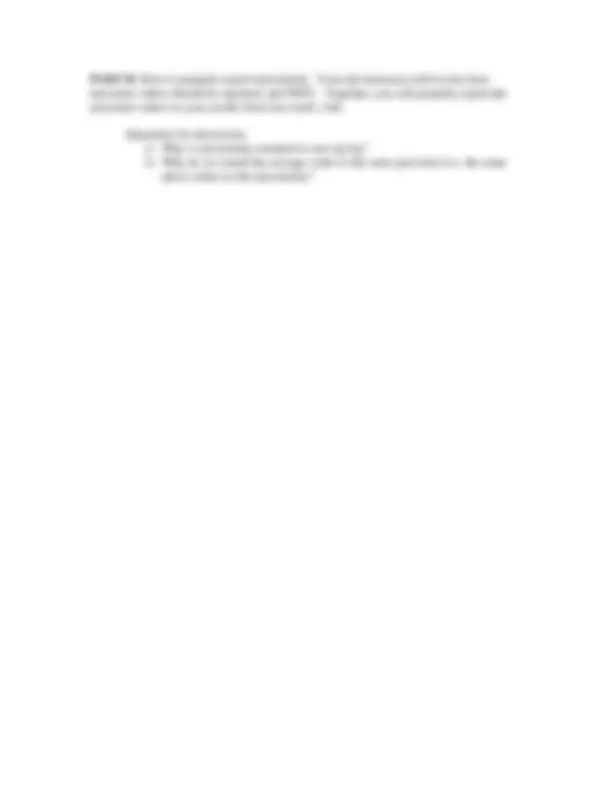
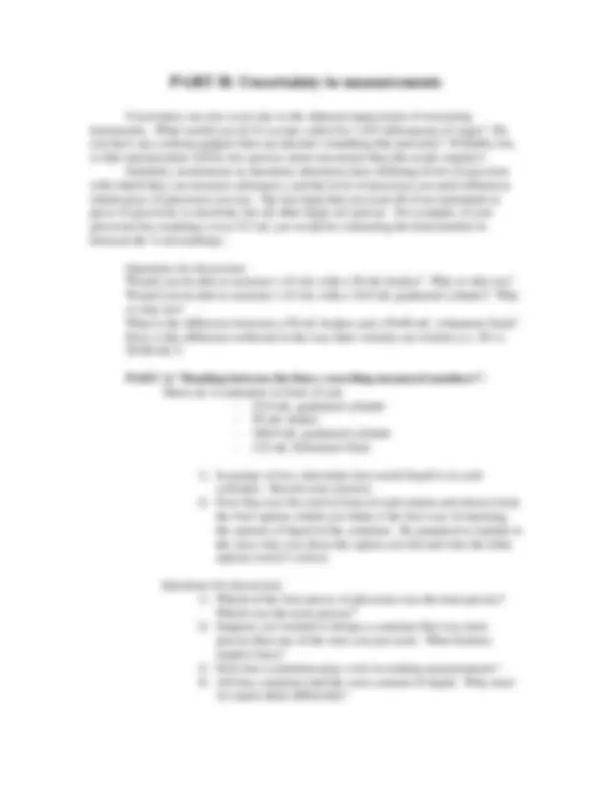
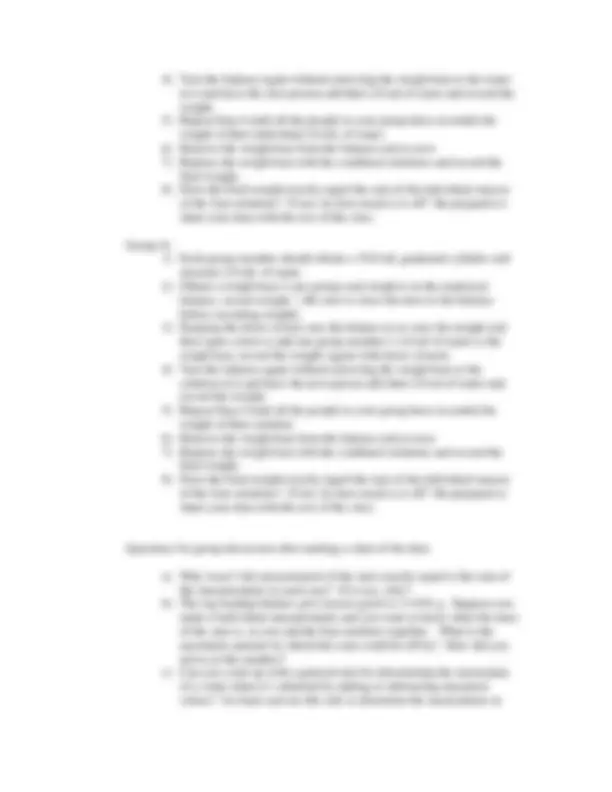
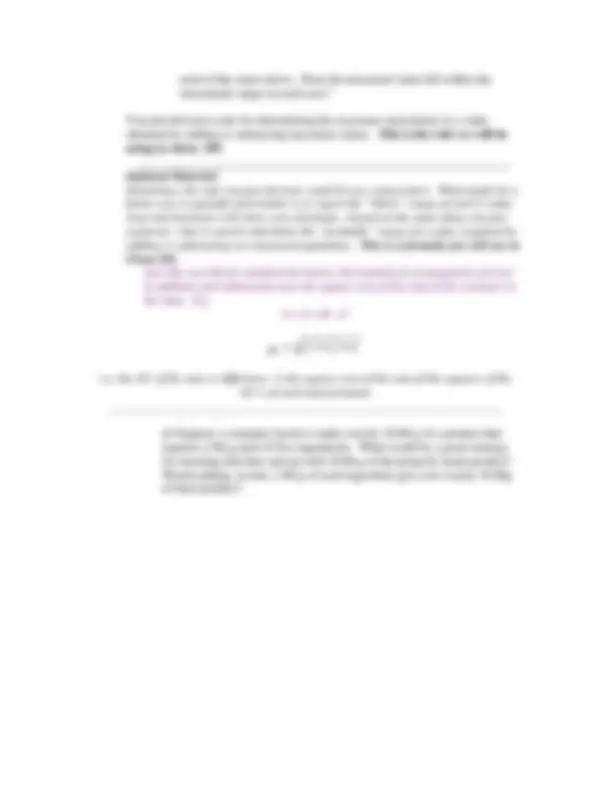
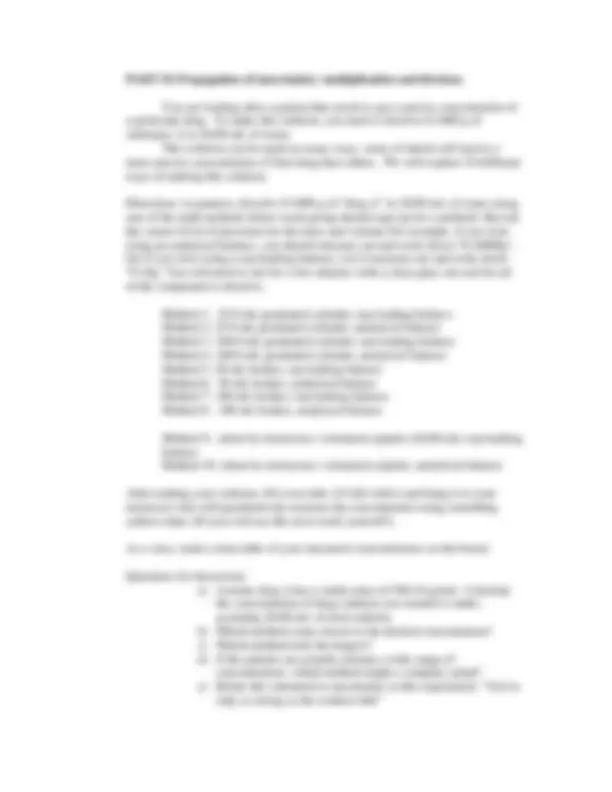


Study with the several resources on Docsity

Earn points by helping other students or get them with a premium plan


Prepare for your exams
Study with the several resources on Docsity

Earn points to download
Earn points by helping other students or get them with a premium plan
Community
Ask the community for help and clear up your study doubts
Discover the best universities in your country according to Docsity users
Free resources
Download our free guides on studying techniques, anxiety management strategies, and thesis advice from Docsity tutors
An overview of uncertainty in scientific measurements, focusing on statistical uncertainty due to random processes and instrumental uncertainty due to the imprecision of measuring instruments. Students are introduced to concepts such as standard deviation, absolute and relative uncertainty, and propagation of uncertainty through examples and activities. The document also discusses the importance of reporting uncertainty and why it is rounded to one sig fig.
Typology: Lab Reports
1 / 11

This page cannot be seen from the preview
Don't miss anything!







Recall that radioactive decay is a random process, so in a given minute, identical amounts of a given sample could undergo slightly different amounts of decay. The average value of many trials, therefore, is a good way to report how many counts per minute one can expect to get from a typical sample. In last week’s lab, the class data was pooled to arrive at average values for the number of counts per minute emitted by each radioisotope. The average value by itself, however, does not provide any information about how much fluctuation there was from trial to trial. For example, suppose your class data looked like this for the counts per minute recorded from a particular sample: Trial # cpm 1 1034 2 1033 3 1035 4 1034
Now suppose another lab’s data looked like this: Trial # cpm 1 1950 2 460 3 1000 4 726
In both sets of data, the average value is 1034 cpm. What is different between the two data sets? Which set of data reflects statistical consistency? Which demonstrates large statistical fluctuation? About which average value are you more “certain”?
The standard deviation is a measure of how widely spread out the data are around the average value. Your lab instructor will explain the mathematical expression for standard deviation. The standard deviation is the root-mean-square deviation from the average (mean) value.
Question for thought: Which set of data would you expect to have a higher standard deviation – the height of every person in the United States, or the height of every NBA player? Would the average values of these two data sets be the same?
PART B : How to properly report uncertainty: Your lab instructor will review how uncertain values should be reported, and WHY. Together, you will properly report the uncertain values in your results from last week’s lab.
Questions for discussion:
PART II: Uncertainty in measurements
Uncertainty can also occur due to the inherent imprecision of measuring instruments. What would you do if a recipe called for 1.453 tablespoons of sugar? Do you have any cooking gadgets that can measure something that precisely? Probably not, so that measurement will be less precise (more uncertain) than the recipe requires! Similarly, instruments in chemistry laboratory have differing levels of precision with which they can measure substances, and the level of precision you need influences which piece of glassware you use. The last digit that you read off of an instrument or piece of glassware is uncertain, but all other digits are precise. For example, if your glassware has markings every 0.5 ml, you would be estimating the final number in between the ½ ml markings.
Questions for discussion: Would you be able to measure 1.43 mL with a 50 mL beaker? Why or why not? Would you be able to measure 1.43 mL with a 10.0 mL graduated cylinder? Why or why not? What is the difference between a 50 mL beaker and a 50.00 mL volumetric flask? How is this difference reflected in the way their volumes are written (i.e. 50 vs. 50.00 mL?)
PART A) “Reading between the lines: recording measured numbers”: There are 4 containers in front of you:
Questions for discussion:
PART C) Propagation of uncertainty: addition and subtraction
Does 1+ 1 = 2? Maybe, but perhaps not in a given measurement!
Split up into four groups, and do the experiment corresponding to your group:
Group 1:
Group 2:
Group 3:
Group 4)
Questions for group discussion after making a chart of the data:
a) Why wasn’t the measurement of the sum exactly equal to the sum of the measurements in each case? If it was, why? b) The top loading balance give masses good to +/-0.01 g. Suppose you make 4 individual measurements and you want to know what the mass of the sum is, so you add the four numbers together. What is the maximum amount by which this sum could be off by? How did you arrive at this number? c) Can you come up with a general rule for determining the uncertainty of a value when it’s obtained by adding or subtracting measured values? Go back and use this rule to determine the uncertainties in
PART D) Propagation of uncertainty: multiplication and division.
You are looking after a patient that needs to get a precise concentration of a particular drug. To make this solution, you need to dissolve 0.1000 g of substance A in 20.00 mL of water. This solution can be made in many ways, some of which will lead to a more precise concentration of final drug than others. We will explore 10 different ways of making this solution.
Directions: in partners, dissolve 0.1000 g of “drug A” in 20.00 mL of water using one of the eight methods below (each group should sign up for a method). Record the correct level of precision for the mass and volume (for example, if you were using an analytical balance, you should measure out and write down “0.10000g”, but if you were using a top-loading balance, you’d measure out and write down “0.10g.”You will need to stir for a few minutes with a clean glass stir-rod for all of the compound to dissolve.
Method 1: 25.0 mL graduated cylinder, top-loading balance Method 2: 25.0 mL graduated cylinder, analytical balance Method 3: 100.0 mL graduated cylinder, top-loading balance Method 4: 100.0 mL graduated cylinder, analytical balance Method 5: 50 mL beaker, top-loading balance Method 6: 50 mL beaker, analytical balance Method 7: 100 mL beaker, top-loading balance Method 8: 100 mL beaker, analytical balance
Method 9: (done by instructor): volumetric pipette (20.00 ml), top-loading balance Method 10: (done by instructor): volumetric pipette, analytical balance
After making your solution, fill a test tube 2/3 full with it and bring it to your instructor who will quantitatively measure the concentration using something called a Spec 20 (you will use this next week yourself!).
As a class, make a data table of your measured concentrations on the board.
Questions for discussion: a) Assume drug A has a molar mass of 588.24 g/mol. Calculate the concentration of drug solution you wanted to make, assuming 20.00 mL of total solution. b) Which method came closest to the desired concentration? c) Which method took the longest? d) If the patient can actually tolerate a wide range of concentrations, which method might a company adopt? e) Relate this statement to uncertainty in this experiment: “You’re only as strong as the weakest link”
How could you assign uncertainty to the concentration you calculated in question A? This value required multiplication/division of two measured quantities (assume there is no uncertainty in the molar mass). Can you come up with a rule to assign uncertainty to a value obtained by multiplying or dividing two numbers? Discuss your rule with your lab instructor, then go back and calculate the uncertainties in each of the concentrations reported in the data table containing the class concentration data. Do the actual concentrations fall within the uncertainties?
You will be using the rule you devised as a class to propagate uncertainty when multiplying and dividing measured values in Chem 105.
Optional Material: Preview of Chem 205: Similarly to the last part, your lab instructor will show you a formula – based on the same ideas you just explored – that is used to determine the “probable” range of a value acquired by multiplying or dividing two measured quantities.
Just like you did for standard deviation, the formula for propagation of error in addition and subtraction uses the square root of the sum of the variance in the data, only this time instead of using the absolute errors you use the relative errors. e.g. S = A * B * C
2 2 2 ⎟ ⎠
e B
e A
e S
e (^) S A B C 2 2 2
e B
e A
e e (^) S S A B C
i .e. the RU of the product or quotient is the square root of the sum of the squares of the RU’s of each measurement.
Question for discussion: Why are absolute uncertainties used to propagate error when adding and subtracting, and why are relative uncertainties used to propagate error when multiplying and dividing? (Think about units as well as mathematical functions.)